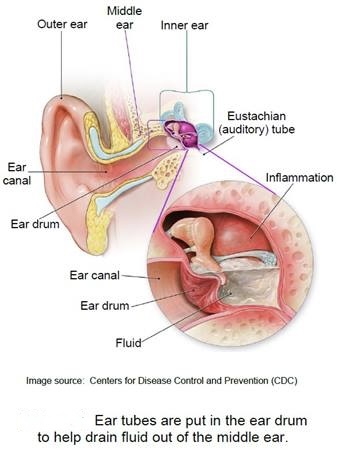A balanced diet is one of the cornerstones of good health. It fuels your body, boosts your immune system, supports brain function, and helps prevent chronic diseases. But in a world filled with processed foods and quick fixes, it’s easy to feel overwhelmed. The good news? Healthy eating doesn’t have to be complicated
“Developing smart eating habits is essential for a healthy lifestyle and maintaining a balanced diet.”

What Is a Balanced Diet? Balanced Diet Essentials: The Core Components
A balanced diet forms the foundation of healthy eating habits that support every system in your body
A balanced diet includes a variety of nutrients from different food groups, each serving a specific purpose in maintaining optimal health. Here are five easy nutrition tips to help you:
- Fruits and Vegetables: Rich in vitamins, minerals, antioxidants, and fiber. Aim for at least five servings per day, focusing on a colorful variety to maximize nutrient intake. Dark leafy greens like spinach and kale provide iron and folate, while citrus fruits offer vitamin C for immune support. The fiber in fruits and vegetables aids digestion and helps maintain stable blood sugar levels.
- Whole Grains: Eat brown rice, quinoa, oats, and whole-wheat bread. They provide long-lasting energy through complex carbohydrates and essential B vitamins. Unlike refined grains, whole grains retain their nutrient-rich bran and germ, offering sustained energy without the blood sugar spikes associated with processed alternatives.
- Proteins: Lean meats, fish, eggs, beans, tofu, and legumes help repair tissues and support muscle health. Protein is essential for building and maintaining muscle mass, especially as we age. Fish like salmon and sardines provide omega-3 fatty acids that support heart and brain health, while plant-based proteins like beans and lentils offer additional fiber and minerals.
- Healthy Fats: Found in avocados, nuts, seeds, and olive oil these fats support brain and heart health. Monounsaturated and polyunsaturated fats help reduce inflammation and support hormone production. These healthy fats also aid in the absorption of fat-soluble vitamins (A, D, E, and K).
- Dairy or Alternatives: Important for calcium and vitamin D, which are crucial for bone health. Choose low-fat options when possible, or explore fortified plant-based alternatives like almond, soy, or oat milk if you have dietary restrictions or preferences.
Focusing on whole foods can make a big difference
Why Building a Balanced Diet is Key to Lifelong Wellness?

The Science Behind Balance – Organized living space
The food pyramid has evolved into healthier alternatives.
Learning about portion sizes and timing of meals can also have a real effect on health outcomes. The plate method is a basic strategy: load up on vegetables and fruit for half your plate, lean protein for a quarter, and whole grains for a quarter. It’s a visual guide that ensures you have the proper proportions of nutrients without difficult calculations. And choosing nutritious meals over processed options. According to the USDA’s dietary guidelines.
Your body’s nutritional needs also vary based on factors like age, activity level, and health conditions. Active individuals may need more carbohydrates for energy, while older adults might require additional protein to maintain muscle mass integrating daily nutrition into your routine.
Balanced Diet Tips for Healthy Eating
- Plan Your Meals: Meal prep helps you avoid unhealthy choices and saves both time and money. Dedicate time each week to plan balanced meals and prepare ingredients in advance. This strategy reduces the temptation to reach for processed convenience foods when you’re busy or tired.
- Read Labels: Be mindful of added sugars, sodium, and trans fats. Look for products with shorter ingredient lists and avoid items where sugar appears among the first three ingredients. Understanding nutrition labels empowers you to make informed choices about the foods you consume.
- Stay Hydrated: Water is essential for every bodily function aim for at least 8 cups a day, adjusting for activity level and climate. Proper hydration supports digestion, nutrient transport, and temperature regulation. If plain water feels boring, try infusing it with fresh fruits or herbs.
- Listen to Your Body: Eat when you’re hungry, stop when you’re full. This mindful approach helps prevent overeating and promotes a healthy relationship with food. Pay attention to hunger and satiety cues, and avoid eating out of boredom or stress.
- Practice Moderation: No need to completely cut out treats just enjoy them occasionally. The 80/20 rule works well: aim to eat nutritiously 80% of the time, allowing flexibility for social occasions and cravings the remaining 20%.
Overcoming Common Obstacles
Many people face challenges when trying to eat healthily. Budget constraints can be addressed by focusing on affordable, nutrient-dense foods like beans, lentils, eggs, and seasonal produce. Buying in bulk and cooking at home can significantly reduce costs while improving nutrition. The connection between food and wellness is stronger than many realize.
Time constraints are another common barrier. Simple strategies like batch cooking grains, pre-cutting vegetables, and keeping healthy snacks readily available can make nutritious eating more convenient.
Incorporating plant-based meals twice a week
Adopting a diet for long-term health!
Benefits of Healthy Eating:
The advantages of maintaining a balanced diet extend far beyond physical appearance:
Immediate Benefits:
- Improved energy levels throughout the day
- Better sleep quality and mood stability
- Enhanced mental clarity and focus
- Stronger immunity and faster recovery from illness
Long-term Benefits:
- Reduced risk of chronic diseases like diabetes, heart disease, and certain cancers
- Healthy weight management
- Better bone health and reduced risk of osteoporosis
- Improved longevity and quality of life in later years
Research consistently shows that people who maintain balanced diets have lower healthcare costs and better overall quality of life as they age.

Making It Sustainable
The key to long-term success lies in making gradual, sustainable changes rather than drastic overhauls. Start small by adding one extra serving of vegetables to your daily meals or replacing one processed snack with a piece of fruit. These small victories build momentum and create lasting habits.
Remember that setbacks are normal and part of the journey. Instead of viewing occasional indulgences as failures, see them as part of a balanced approach to eating and living.
CONCLUSION:
Healthy eating is not about perfection it’s about balance, consistency, and enjoying a variety of foods that nourish your body and mind. By understanding the fundamentals of nutrition, planning ahead, and making gradual improvements, you can create a sustainable approach to eating that supports your lifelong wellness goals.
Small, sustainable changes can lead to big results over time. Your journey toward better health through nutrition is an investment in your future self, providing you with the energy and vitality to live your best life at every stage.
NOTE: “The information in this post is based on guidelines and research from leading health institutions including the American Academy of Pediatrics, Harvard T.H. Chan School of Public Health, and other recognized medical authorities.”
- American Academy of Pediatrics – feeding guidelines
- Academy of Nutrition and Dietetics – nutritional recommendations
- Harvard T.H. Chan School of Public Health – nutrition research
- USDA Dietary Guidelines – official nutrition standards
Meal planning and kitchen organization make healthy eating easier. Discover our smart home organization tips for an efficient cooking space.
Sharing nutritious meals brings families together. Find out how to build stronger family bonds through shared dining experiences.










